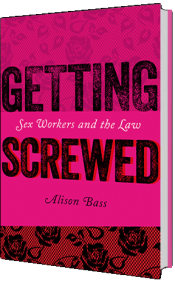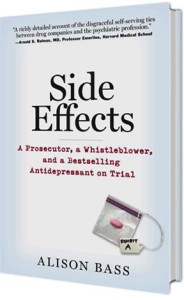In my previous blogs about West Virginia’s shockingly high rate of prescription drug overdoses — the Mountain State has the second highest rate of overdoses in the nation — I focused on “the culture of disability” that created this problem and what should be done to curb the over-prescribing of addictive painkillers by doctors — see here and here. I also talked about how the state’s inadequate health care system tends to feed into the problem, making it difficult for addicts in Appalachia to get the help they need when they want it. But I overlooked one very important solution to this crisis: making the drugs themselves safer.
Opiate painkillers like Oxycontin and Vicodin not only dull pain but when taken in high doses, they produce a high that can become quite addictive. Addicts often have to consume larger and larger quantities of the drug to keep that high coming. The problem is that when taken in such large quantities, such drugs also cause respiratory failure, which is why prescription drug overdoses now kill more West Virginians each year than car accidents do.
The drug companies that make these potent painkillers now have the technology to reduce this abuse and save lives, says Dr. Jeffrey Coben, professor of emergency medicine and director of the Injury Control Research Center at West Virginia University. These companies have already developed pain killers that contain an antidote to the ingredient in the drug that causes respiratory failure (as well as the high), and this antidote is released whenever the drugs are crushed. (Many addicts like to crush the pills to enhance their effects; once crushed, they can be snorted or injected directly into the bloodstream).
With the new technology, the antidote would be released if the drug is crushed and addicts would not get the same high or respiratory effect, Coben says. These drugs are called agonist-antagonist medications, and in some cases, they are already on the market. Other companies are developing tamper-proof prescription dispensers that are timed to release a pill only every eight hours so that dangerous drugs like methadone (which is prescribed to help people wean themselves off of heroin addiction) could only be consumed every eight hours, as prescribed. (Methadone is frequently abused in West Virginia and also causes overdose fatalities).
So why are these new drugs and devices not being marketed and prescribed in place of the older more dangerous painkillers ? The reason is simple: money. They are more expensive to produce and drug companies make tons of money from the addictive painkillers like Oxycontin and Vicodin, so they’re in no rush to provide a solution. The higher costs have also kept many of these drugs from being approved for use by health care insurance providers. Coben says the only way drug companies will market these new drugs is if they are forced to.
“That’s what happened with the car companies,” Coben says.
Coben says airbags and other safety mechanisms that prevent fatalities in car accidents were available long before car companies began installing them in vehicles. It wasn’t until the companies began to get sued by families who had lost loved ones in car accidents that airbags were installed as a matter of course. And the number of fatalities from drunk driving and other car accidents nosedived.
“It was the tort system at work,” Coben says. “The same thing has to happen to the drug companies.”
It’s too bad, of course, that our state and federal regulators can’t seem to muster the political will to require the marketing and prescribing of safer opiate painkillers. Indeed, the federal Department of Health and Human Services could ensure that Medicare and Medicaid include agonist-antagonist drugs in their drug formularies and save many lives in one bold sweep. But until the feds get their act together — are you listening, President Obama? — it’s up to the families who have lost loves ones to prescription drug overdoses to sue the drug makers and force change.



Opiate antagonist drugs can also be excruciatingly painful when taken by someone who already has drugs in their system. Feel like you should at least mention this.
Also, as we’ve seen happen in southern VT, for example, when these safeguards are introduced to opiate prescription drugs like Oxycontin, making inhalation use impossible, opiate users simply move on to heroin in huge numbers. Thus, this simply makes the situation worse, since heroin, being put out on the black market, is a much less pure supply, and thus this switch increases overdoses (since users can’t really calculate their dose re: their tolerance when they don’t know what they’re getting each time.) Furthermore, it makes users who’d otherwise have kept with inhalation move to injection to get the biggest bang for their buck, given that they have to deal with less purity/potency with heroin. So, from a harm reduction perspective, these kinds of measures just make things drastically worse. (http://www.sfgate.com/news/article/OxyContin-use-down-in-Vt-but-heroin-use-increases-4061656.php )
Caty:
Thanks for bringing the Vermont article to my attention. I’m not sure that nine heroin overdoses in 2011 — as the article reports — constitutes a drastically worse problem. It seems to me that the new Oxycontin formula, which doesn’t allow addicts to get high from crushing the pills, is a step in the right direction, even if it turns a few people toward heroin. It also means that more lives might be saved from prescription drug overdoses.